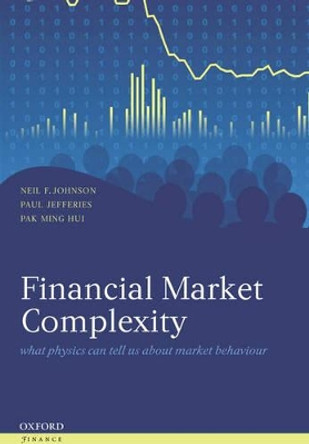The scientific study of complex systems has transformed a wide range of disciplines in recent years, enabling researchers in both the natural and social sciences to model and predict phenomena as diverse as earthquakes, global warming, demographic patterns, financial crises, and the failure of materials. In this book, Didier Sornette boldly applies his varied experience in these areas to propose a simple, powerful, and general theory of how, why, and when stock markets crash. Most attempts to explain market failures seek to pinpoint triggering mechanisms that occur hours, days, or weeks before the collapse. Sornette proposes a radically different view: the underlying cause can be sought months and even years before the abrupt, catastrophic event in the build-up of cooperative speculation, which often translates into an accelerating rise of the market price, otherwise known as a "bubble." Anchoring his sophisticated, step-by-step analysis in leading-edge physical and statistical modeling techniques, he unearths remarkable insights and some predictions--among them, that the "end of the growth era" will occur around 2050. Sornette probes major historical precedents, from the decades-long "tulip mania" in the Netherlands that wilted suddenly in 1637 to the South Sea Bubble that ended with the first huge market crash in England in 1720, to the Great Crash of October 1929 and Black Monday in 1987, to cite just a few. He concludes that most explanations other than cooperative self-organization fail to account for the subtle bubbles by which the markets lay the groundwork for catastrophe. Any investor or investment professional who seeks a genuine understanding of looming financial disasters should read this book. Physicists, geologists, biologists, economists, and others will welcome Why Stock Markets Crash as a highly original "scientific tale," as Sornette aptly puts it, of the exciting and sometimes fearsome--but no longer quite so unfathomable--world of stock markets.
About the AuthorDidier Sornette is professor of entrepreneurial risks at the Swiss Federal Institute of Technology in Zurich, professor of finance at the Swiss Finance Institute in Geneva, and the director of the Financial Crisis Observatory at ETH Zurich.
Reviews"While it's difficult to pinpoint what type of trader would enjoy this book the most, I think there's something for everyone, whether you're a quaint, technical trader or a fundamentalist... I feel that I'm smarter after finishing this book; I thoroughly enjoyed the lengthy journey, and would recommend this to any stock market enthusiast."--Jeff Pierce, Seeking Alpha "A highly recommended, enjoyable, well-researched, and thought-provoking book for anyone interested in stock markets and the modeling of financial processes."--Rick Gorvett, Journal of Risk and Insurance "The book is written in a readable style and does not require technical knowledge. Any reader interested in a serious approach to the origin and possible prediction of financial bubbles will enjoy reading it."--Josep M. Porra, Journal of Statistical Physics "Sornette's book is not just about finance and economics; it is also a mesmerizing introduction to game theory, fractals, catastrophe theory, critical phenomena, and much more. No prior knowledge of finance or economics is needed to understand the book... Throughout the book, Sornette makes numerous, vivid comparisons with many other fields in which the various mathematical tools he describes can be applied."--Frank Cuypers, Physics Today
Book InformationISBN 9780691175959
Author Didier SornetteFormat Paperback
Page Count 448
Imprint Princeton University PressPublisher Princeton University Press
Weight(grams) 510g








